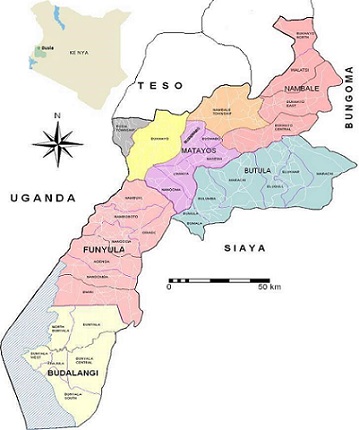Kenya Bamboo Resources
Kenya Bamboo resources, opportunities and challenges
Kenya has an estimated 133,000 hectares of bamboo, belonging to one indigenous, Oldeania aplina and over 20 exotic bamboo species have been introduced during the last two decades through the support of KEFRI.
Despite this abundance, however, existing bamboo resources in Kenya are underutilized due to lack of awareness of its potential; lack of technology required for processing and value addition; poorly developed market structures; lack of relevant information on availability of planting material, site matching; propagation; establishment; crop management and harvesting techniques. As such, the large potential of bamboo for job creation, income generation and environmental development is still untapped and the country contributes only 0.02% to the global export of bamboo products. Bamboos form an integral part of indigenous forests, providing vital ecosystem services to the nation’s water towers. In addition, as a fast growing, highly renewable resource with properties similar to timber, bamboo can support green economic development, climate change strategies and contribute to key national goals, such as Kenya’s ‘Vision 2030’ under which it aims to become a middle income nation with a high quality of life for all Kenyans

Area of Operations

Busia County
Busia County (GPS Coordinates 0° 25' 59.99" N, 34° 08' 60.00" E) is situated in Western Kenya, with a population of 893,000.
The annual rainfall of between 760 millimetres (mm) and 2000 mm. 50% of the rainfall falls in the long rain season which is at its peak between late March and late May, while 25% falls during the short rains between August and October. The dry season with scattered rains falls from December to February. The temperatures for the whole county are more or less homogeneous. The annual mean maximum temperatures range between 26°celcius and 30°celcius while the mean minimum temperature range between 14°celcius and 22 °Celsius and elevation of about 1,500 metres. The county soils are sandy loam, dark clay covers the northern and central parts of the county. Other soil types are sandy clays and clays rich for varieties of crops including bamboo farming.
Bamboo; Bamboo and Bamboo
Bamboo is a woody-grass plant with 1642 known species around the world. There is a large diversity of products estimated at 10,000 that can be made from bamboo.
These range from finished, intermediary and ancillary products. Once planted it matures between 3-5 years depending on the product development. Bamboo has made significant contribution to rural and urban livelihood apart from ecosystem role across the world. It is important resource of economic welfare and rural development. The socio-economic role of bamboo boils down to poverty alleviation, generation of employment, income and improved standard of living in general The utilization of bamboo resource by the rural poverty poses a great potential to solution of rural poverty, unemployment and backwardness. Water catchment and environmental conservation enable rural people to secure a stable livelihood. Rural people have great skills and are capable of transforming bamboo resource into simple products which can attract high prices both rural and urban markets. In addition, a strategic tool to meet a range of Country’s development plans such as ; Kenya Vision 2030, National Climate Change Strategies and Green Economy Strategy and Implementation Plan(GESIP), the Big Four Agenda and international development goals.

Leadership and Management
Eco Green Management and leadership principles serve as guidelines for the decisions, actions, procedures and policy development of the organization. The principles are the fundamental truths within the organization that contribute to its growth and sustain its viability. The organization employ principles that help them function on a daily basis.Effective management is a primary objective for Eco Green across the country. At Eco Green, all employees must adhere to the Organization Management and Leadership Principles. Eco Green believes that better management and leadership helps to build stronger communities, businesses and organization.

Bamboo as a strategic tool for livelihood improvement and landscapes restoration
Bamboo has huge global prospects and an important form of livelihood for millions of people, and is considered one of the world’s most valuable non‐timber forest products. This is important, as it means that environmental protection initiatives which use bamboo do not negatively impact rural communities. Bamboo can be processed into food, furniture, paper, packaging, handicrafts or fuel. It grows fast, matures within a few years and regenerates after harvesting without the need for replanting, making it an essentially ‘renewable’ resource. Moreover, bamboo can be grown on peripheral soil or as part of intercropping farm systems, ensuring that it does not compete with productive agricultural land. Bamboo’s income potential is particularly important for women. Its light weight and linear‐splitting nature makes it easier to process than timber, which provides farmers, many of whom are women, with opportunities to engage in initial processing, and so increases their share in value addition. Bamboo can also reduce the risks associated with collecting timber for fuel-wood, a job typically done by women in certain parts of the world including rural Kenya.
Diversification
In a bid to expand.
Innovativeness
To take full advantage of the market potential.
